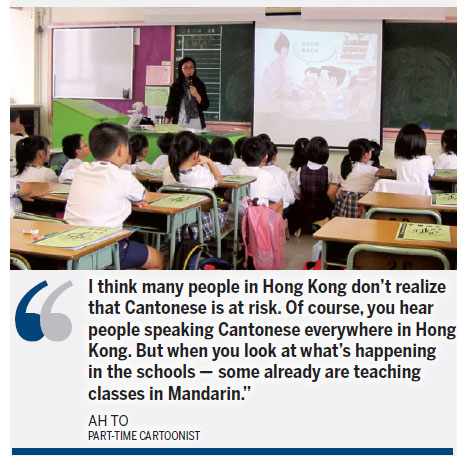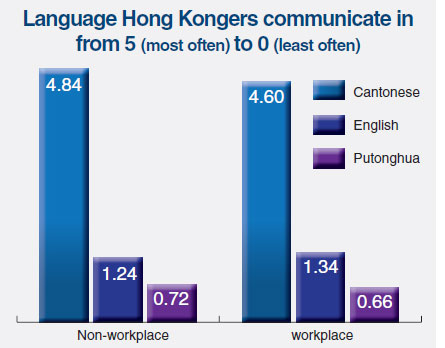The people's dialect
Updated: 2014-03-14 07:26
(HK Edition)
|
|||||||||

From 1991 up to the handover, the proportion of people over the age of five and speaking Cantonese as their first language remained stable at 88.7 percent, according to the Census and Statistics Department.
Nearly a decade after the handover, that proportion grew to 90.8 percent. Putonghua, English and other Chinese dialects have declined. Cantonese remains the language to the Legislative Council, from the barbs thrown at political opponents to the annual Policy Address.
Hong Kong linguistics doctorate Leung Wai-mun also found that more than half the people he surveyed said they'd rather more resources be invested in the teaching of Putonghua and English. Respondents found daily use of Cantonese sufficient to maintain skills in their native language.
The debate over whether to increase the number of classes taught in Putonghua is largely moot.
The number of children from the mainland registering in Hong Kong's primary and secondary schools remained at less than 1 percent of the student population in the last academic year.
Rules denying mainland residents access to maternity care at Hong Kong hospitals is likely to restrain deeper penetration of Putonghua for at least a few years to come.
Tung Chee-hwa rolled out Hong Kong's bi-literate and trilingual policy of Putonghua, Cantonese and English "to maintain our competitive edge in the world" in his 1997 policy address. Putonghua was introduced as a subject in local schools in 2005. The government is proposing to allocate a further HK$5 billion to the Standing Committee on Language Education and Research, SCOLAR, to continue to promote and enhance local tri-lingualism.
Put in context - that commitment to improving language skills is about one-fifth the entire amount that the Hong Kong government is spending on higher learning in the current academic year.

(HK Edition 03/14/2014 page3)